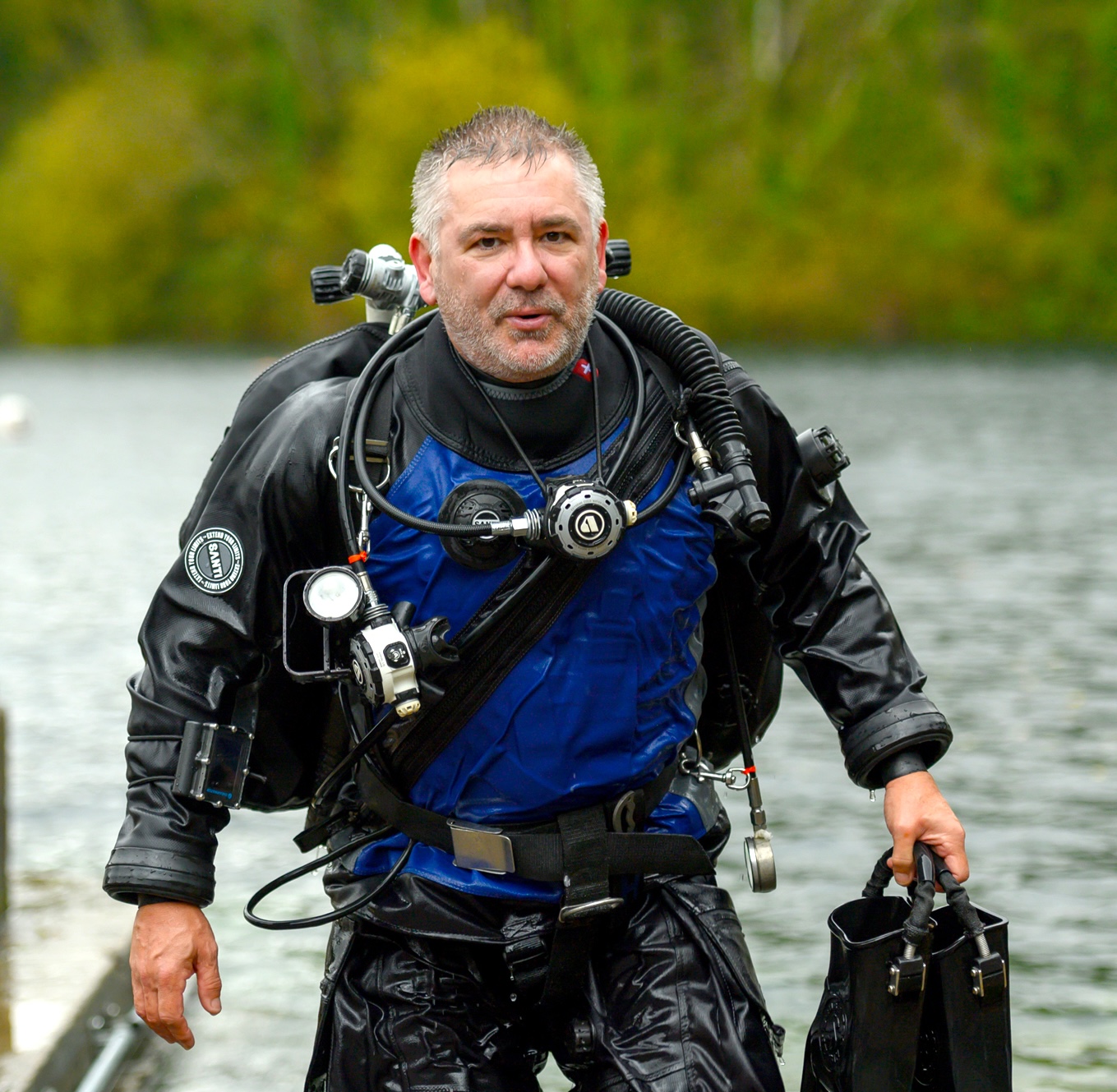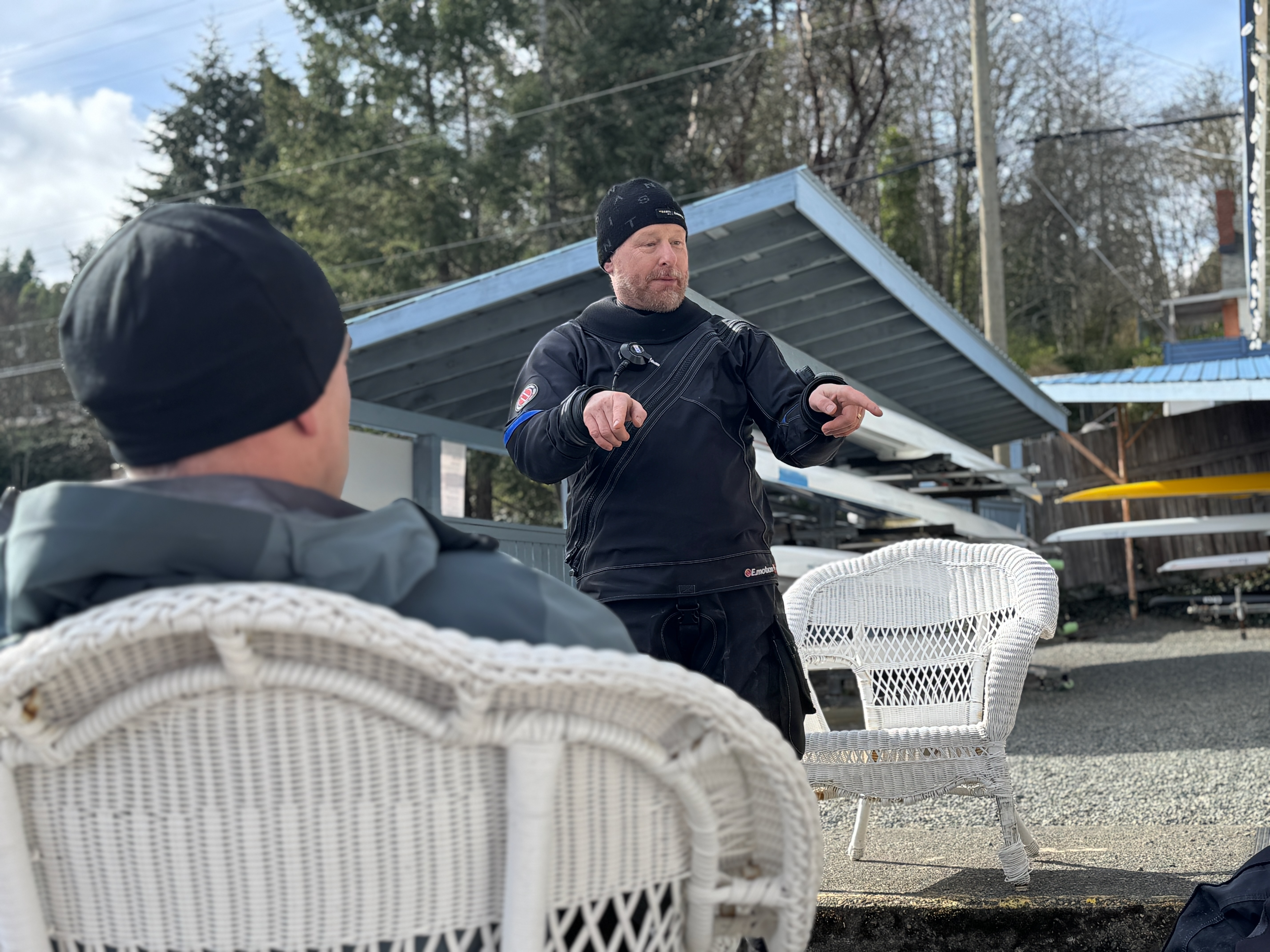
Top Tips for Technical/Cave Divers: Psychological Safety and Just Culture
Nov 05, 2025The Hidden Depths of Small Talk
You’re sitting on the bench at the dive site, chatting with your buddy before the first dive of the weekend.
“Morning mate, sleep well?”
“Yeah, not bad. You?”
This small talk doesn’t seem like much, a handshake, a nod, a few polite words, but that small talk is doing something critical when it comes to diving safety: it’s opening the door to trust being developed.
In diving, we know that safety isn’t just about equipment checks, gas plans, or navigation. It’s about interpersonal safety, the ability to say, “I’m not sure,” “Can we check that again?” or “I messed up and we need to end the dive before we've even got in the water.” Those moments rely on something deeper than politeness and being 'nice', they require a critical element of teamwork to be present, psychological safety.
There are numerous blogs in this site about psychological safety, you can find them via this tag. However, this article is going to be subtly different, it's going to look at how our communication and what we share impacts psychological safety.
Understanding the Communication Triangle
Psychologist John Powell outlined five levels of communication in his 1969 book 'Why Am I Afraid to Tell You Who I Am?' This framework is widely used in leadership, coaching, and human performance training.
Each level represents a step up in trust, openness, and risk-taking:
- Ritual / Cliché – “Morning!” “How’s it going?”. Polite but safe. These open the communication channel but carry no personal risk.
- Facts / Information – “We’re diving the wreck today, 32% mix, max 30 metres.” Factual and transactional. There’s communication, but no emotional investment.
- Judgement / Ideas – “I think we should run the line this way.”. Sharing opinions introduces risk — someone might disagree. But it’s also where collaboration begins.
- Feelings / Emotions – “That last dive scared me a bit.” The hardest level. It demands trust and emotional safety. This requires all parties to be willing to be vulnerable.
- Peak Rapport – Silent understanding, where gestures and glances communicate more than words.
Often seen in experienced teams. You may have seen divers who just know what each other means.
At the bottom of the triangle, comfort is high but connection is low. At the top, communication is authentic, fluid, and deeply human, but it requires courage and trust to get there. Telling context-rich stories happens at the very top of the triangle, and because it requires commitment and vulnerability, it is so hard to achieve on a regular basis.
Psychological Safety: The Invisible Buoyancy Device
Amy Edmondson’s concept of psychological safety describes a team climate where it’s safe to take interpersonal risks. In diving, that means being able to say:
- “I’m not comfortable with that gas plan.”
- “Let’s check this again.”
- “Something doesn’t feel right.”
Without psychological safety, we stay in the lower half of the triangle. We're polite, factual, but guarded. It's here that critical information gets filtered, uncertainty or being uncomfortable stays hidden, and the small issues grow into big ones.
What does this look like in practice?
During a deep trimix course, a diver noticed that one of the team’s deco bottles looked off — the MOD marking didn’t quite match the label. He thought about saying something but hesitated. The instructor was busy. The others seemed confident. He didn’t want to look petty.
Underwater, they discovered that two bottles had been mislabelled — one contained EAN50, the other 32%.
A conservative gas switch saved them from a potentially serious oxygen exposure.
The issue wasn’t competence — it was communication.
The diver saw something but didn’t feel safe to speak up. They were stuck at level two of the triangle — exchanging facts, not trust.
After the dive, the debrief focused not on the label error, but on why it felt hard to raise a concern. That conversation, uncomfortable, reflective, emotional, was level four on the model above. This level is where real learning happens and resilience/capacity develops.
The Dive Brief as a Mirror
You can often tell a team’s communication depth by listening to their pre-dive brief.
Level 2 briefs focus on logistics: depth, time, gas, procedures. Level 3–4 briefs include the human element:
- “If I’m quiet, I might be overloaded — give me a second.”
- “If you see me fiddling with my loop, I’m checking something, not in trouble.”
These statements are small acts of disclosure. They build shared mental models — the invisible glue that holds teams together underwater.
Building Trust, One Level at a Time
You can’t jump straight to peak rapport. Trust builds through consistent behaviour and mutual respect.
Here’s how to move up the triangle in your diving:
- Start with Rituals, but Move Beyond Them. “How are you?” is fine. But ask, “How are you feeling about the dive?” That one word opens new ground.
- Invite Opinions and Listen. “What do you think?” only works if you genuinely want the answer. Listening without judgment accelerates trust.
- Model Vulnerability. Instructors and experienced divers set the tone. Saying “I made an error last time” signals it’s safe to be human.
- Use Learning-Oriented Debriefs. Replace “Why did you do that?” with “What made sense at the time?” Exploration over blame builds safety and understanding.
- Celebrate Peak Moments. When everything clicks — effortless communication, mutual trust — acknowledge it. That’s not luck; it’s the result of deliberate human work.
From Polite to Powerful
Most dive teams operate comfortably within the first two levels. It feels efficient, professional, and safe. But it’s also shallow. The real magic happens when divers are brave enough to go further: to share ideas, express feelings, and admit doubts.
When we climb the Communication Triangle, we don’t just improve the conversation happening between two divers or a diving instructor and their student, we improve team learning and decision-making, and increased safety comes as a by-product of this improved behaviour.
So next time you’re gearing up, remember: every “Morning!” is an invitation to something deeper. Ask one more question. Share one more thought. Reveal one more feeling. By taking this approach, we become better than yesterday, one conversation at a time.

Gareth Lock is the owner of The Human Diver. Along with 12 other instructors, Gareth helps divers and teams improve safety and performance by bringing human factors and just culture into daily practice, so they can be better than yesterday. Through award-winning online and classroom-based learning programmes, we transform how people learn from mistakes, and how they lead, follow and communicate while under pressure. We’ve trained more than 600 people face-to-face and 2500+ online across the globe, and started a movement that encourages curiosity and learning, not judgment and blame.
If you'd like to deepen your diving experience, consider the first step in developing your knowledge and awareness by signing up for free for the HFiD: Essentials class and see what the topic is about. If you're curious and want to get the weekly newsletter, you can sign up here and select 'Newsletter' from the options.
Want to learn more about this article or have questions? Contact us.











